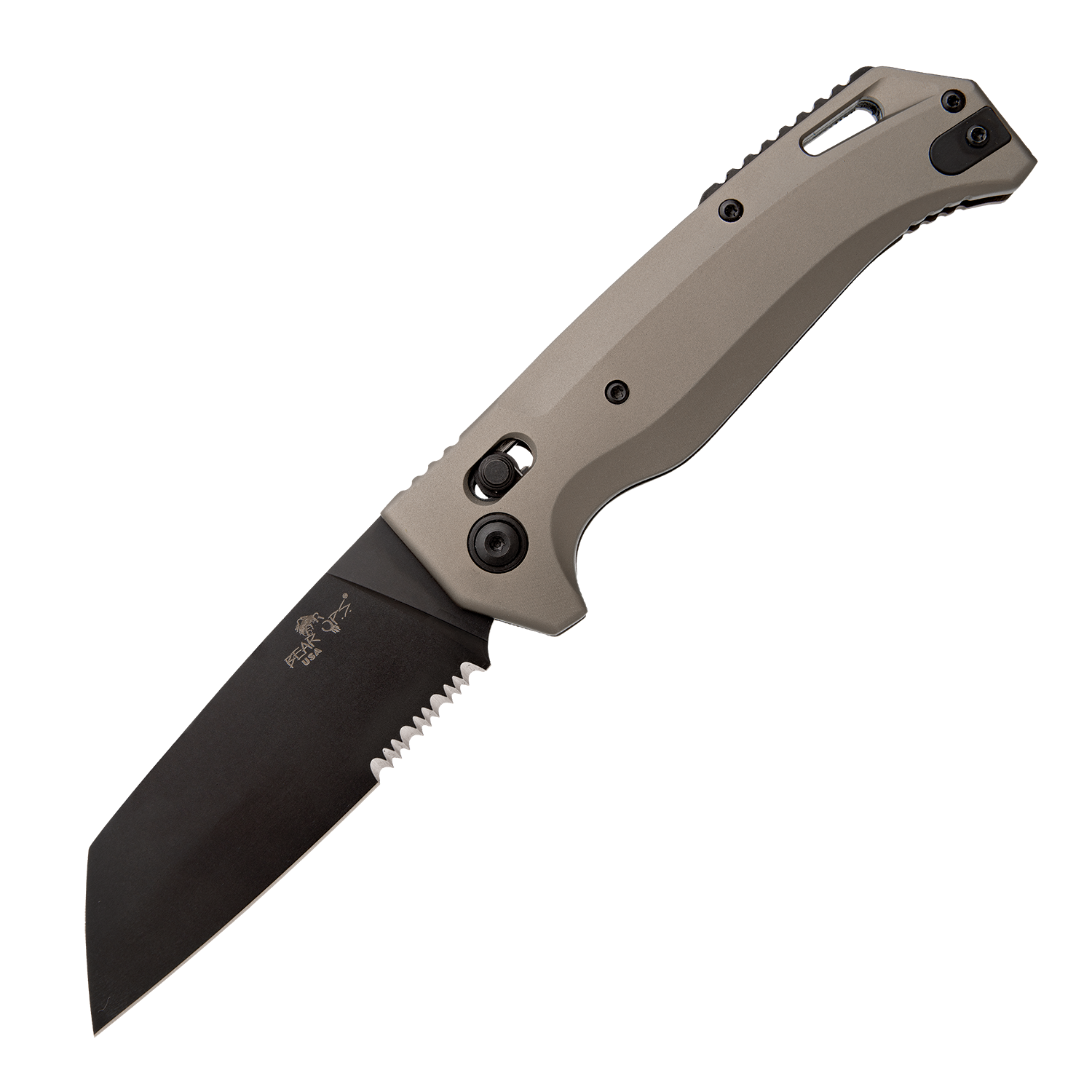Laser engraving has revolutionized the art of customization, offering precision, speed, and versatility in creating intricate designs on various materials. When it comes to knives, engraving provides a seamless way to add logos, initials, or decorative elements that enhance the aesthetic appeal and personalization of these essential tools. In this comprehensive guide, we will delve into the process engraving logos on knives, exploring the techniques, tools, and considerations that can help you achieve professional results.
Why Choose Laser Engraving for Knives?
Laser engraving has become a preferred method for adding logos to knives due to several key advantages:
Precision: Laser technology allows for incredibly precise and detailed engravings. Ensuring that even intricate logos are reproduced accurately on knife surfaces.
Versatility: Laser engraving can be used on a wide range of materials. Including various types of metals commonly used in knife production such as stainless steel titanium, and aluminum.
Durability: Laser-engraved logos are permanent and resistant to fading, scratching, or wearing off over time, ensuring that the branding or personalization remains intact for the lifespan of the knife.
Efficiency: Laser engraving is a fast and efficient process, making it ideal for both individual customization and large-scale production of branded knives.
Tools and Equipment for Laser Engraving on Knives
1. Laser Engraving Machine
Investing in a high-quality fiber laser specifically designed for metal engraving is essential for achieving professional results. Look for a machine with sufficient power and precision control to handle the intricacies of logo engraving on knives.
2. Air Purifier
When laser engraving metal, the process vaporizes the material, releasing fumes and particulate matter into the air. As a result, utilising an air purifier—also known as a fume extractor—is strongly recommended. A good air purifier with HEPA and activated carbon filters effectively captures these particles and odors, ensuring a cleaner, safer, and healthier working environment.
3. Vector Graphics Software
Prepare your logo design using vector graphics software such as Adobe Illustrator or CorelDRAW. Vector files are ideal for laser engraving as they allow for scaling without loss of quality and provide the necessary precision for intricate designs.
4. Safety Gear
When operating a laser engraving machine, it is important to prioritize safety. Wear appropriate protective gear, such as safety glasses, to shield your eyes and ensure a safe working environment.
Steps to Laser Engrave a Logo on a Knife
1. Prepare the Knife
Clean the surface of the knife thoroughly to remove any dirt, oil, or debris that could interfere with the engraving process. Make sure the knife is firmly in the engraving area to prevent movement during engraving.
2. Import and Prepare the Design
Import your logo design into the vector graphics software and adjust the size and placement to fit the dimensions of the knife. Consider the curvature of the knife surface and make any necessary adjustments to ensure proper alignment.
3. Set Laser Parameters
Configure the engraving machine settings, including fiber laser power, speed, and frequency, based on the type of metal and the desired depth of engraving. Perform test runs on a sample piece of metal to fine-tune the settings before engraving the actual knife.
4. Focus the Laser
Use the focusing lens to adjust the focal point of the laser beam to the surface of the knife. Achieving the correct focal distance is crucial for producing sharp and clear engravings.
5. Begin Engraving
Begin the engraving procedure keeping track on the progress to ensure that the logo is etched correctly and at the required depth. Depending on the complexity of the design, the engraving may take varying amounts of time to complete.
6. Inspect and Clean
Once the engraving is complete thoroughly scrutinise the logo for flaws or inconsistencies. Use a soft cloth and mild cleaning solution to remove any residue from the engraving process, revealing the crisp and precise logo on the knife surface.
Tips for Achieving Optimal Results
Choose the Right Settings: Experiment with different laser power and speed settings to find the optimal configuration for your specific knife material and logo design.
Consider Material Properties: Different metals may react differently to laser engraving, so be mindful of the material properties when selecting engraving parameters.
Test on Scrap Material: Before engraving the actual knife practice on a scrap piece of the same material to ensure. That the settings are correct and the desired results are achieved.
Maintain Consistent Speed: Keep the laser engraving machine moving at a consistent speed to avoid over-etching or under-etching the logo on the knife surface.
Regular Maintenance: Perform routine maintenance on your fiber laser engraving machine, including cleaning the lenses and calibrating the settings, to ensure consistent performance and longevity.
Conclusion
Laser engraving offers a sophisticated and efficient way to add logos to knives, creating personalized and branded pieces that stand out for their quality and craftsmanship. By following the steps outlined in this guide and utilizing the right tools and techniques, you can master the art of laser engraving on knives and unlock endless possibilities for customization and branding. Whether you are a knife enthusiast, a business owner, or a creative individual looking to make a statement with custom designs, laser engraving provides a versatile and reliable solution for achieving stunning results on knife surfaces.


